Theoretically proposed optimal frequency for ultrasound induced cartilage restoration
- PMID: 29132387
- PMCID: PMC5684760
- DOI: 10.1186/s12976-017-0067-4
Theoretically proposed optimal frequency for ultrasound induced cartilage restoration
Abstract
Background: Matching the frequency of the driving force to that of the system's natural frequency of vibration results in greater amplitude response. Thus we hypothesize that applying ultrasound at the chondrocyte's resonant frequency will result in greater deformation than applying similar ultrasound power at a frequency outside of the resonant bandwidth. Based on this resonant hypothesis, our group previously confirmed theoretically and experimentally that ultrasound stimulation of suspended chondrocytes at resonance (5 MHz) maximized gene expression of load inducible genes. However, this study was based on suspended chondrocytes. The resonant frequency of a chondrocyte does not only depend on the cell mass and intracellular stiffness, but also on the mechanical properties of the surrounding medium. An in vivo chondrocyte's environment differs whether it be a blood clot (following microfracture), a hydrogel or the pericellular and extracellular matrices of the natural cartilage. All have distinct structures and compositions leading to different resonant frequencies. In this study, we present two theoretical models, the first model to understand the effects of the resonant frequency on the cellular deformation and the second to identify the optimal frequency range for clinical applications of ultrasound to enhance cartilage restoration.
Results: We showed that applying low-intensity ultrasound at the resonant frequency induced deformation equivalent to that experimentally calculated in previous studies at higher intensities and a 1 MHz frequency. Additionally, the resonant frequency of an in vivo chondrocyte in healthy conditions, osteoarthritic conditions, embedded in a blood clot and embedded in fibrin ranges from 3.5 - 4.8 MHz.
Conclusion: The main finding of this study is the theoretically proposed optimal frequency for clinical applications of therapeutic ultrasound induced cartilage restoration is 3.5 - 4.8 MHz (the resonant frequencies of in vivo chondrocytes). Application of ultrasound in this frequency range will maximize desired bioeffects.
Keywords: Cellular deformation; Mechanical energy density; Resonant frequency.
Conflict of interest statement
Ethics approval and consent to participate
Not applicable.
Consent for publication
Not applicable.
Competing interests
The authors declare that they have no competing interests.
Publisher’s Note
Springer Nature remains neutral with regard to jurisdictional claims in published maps and institutional affiliations.
Figures
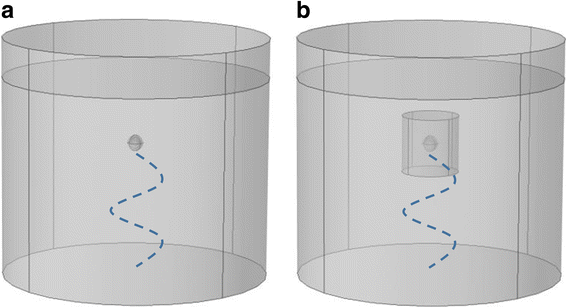
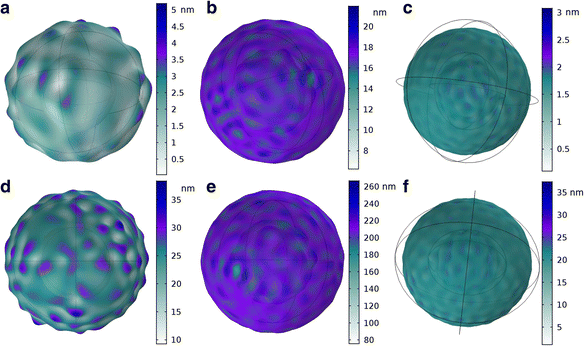
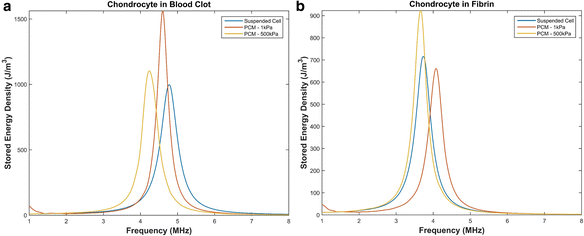

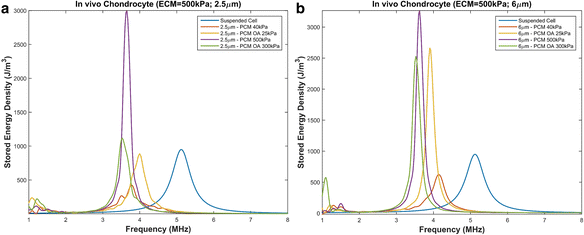
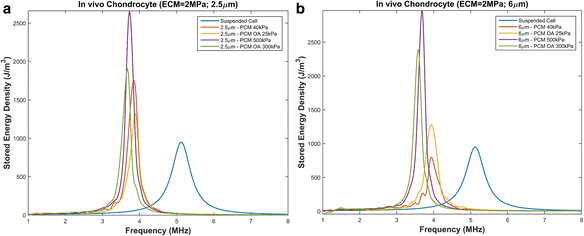
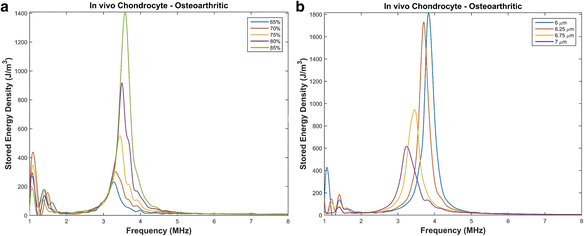
Similar articles
-
Frequency sensitive mechanism in low-intensity ultrasound enhanced bioeffects.PLoS One. 2017 Aug 1;12(8):e0181717. doi: 10.1371/journal.pone.0181717. eCollection 2017. PLoS One. 2017. PMID: 28763448 Free PMC article.
-
The deformation behavior and viscoelastic properties of chondrocytes in articular cartilage.Biorheology. 2000;37(1-2):27-44. Biorheology. 2000. PMID: 10912176 Review.
-
The deformation behavior and mechanical properties of chondrocytes in articular cartilage.Osteoarthritis Cartilage. 1999 Jan;7(1):59-70. doi: 10.1053/joca.1998.0162. Osteoarthritis Cartilage. 1999. PMID: 10367015 Review.
-
Depth-dependent analysis of the role of collagen fibrils, fixed charges and fluid in the pericellular matrix of articular cartilage on chondrocyte mechanics.J Biomech. 2008;41(2):480-5. doi: 10.1016/j.jbiomech.2007.09.002. Epub 2007 Oct 22. J Biomech. 2008. PMID: 17936762
-
A nonlinear model of cell interaction with an acoustic field.J Biomech. 2017 May 3;56:83-88. doi: 10.1016/j.jbiomech.2017.03.007. Epub 2017 Mar 14. J Biomech. 2017. PMID: 28372796
Cited by
-
Biological Effects and Applications of Bulk and Surface Acoustic Waves on In Vitro Cultured Mammal Cells: New Insights.Biomedicines. 2022 May 18;10(5):1166. doi: 10.3390/biomedicines10051166. Biomedicines. 2022. PMID: 35625902 Free PMC article. Review.
-
Basic Principles of RNA Interference: Nucleic Acid Types and In Vitro Intracellular Delivery Methods.Micromachines (Basel). 2023 Jun 27;14(7):1321. doi: 10.3390/mi14071321. Micromachines (Basel). 2023. PMID: 37512632 Free PMC article. Review.
-
Efficacy and safety of novel low-intensity pulsed ultrasound (LIPUS) in treating mild to moderate erectile dysfunction: a multicenter, randomized, double-blind, sham-controlled clinical study.Transl Androl Urol. 2019 Aug;8(4):307-319. doi: 10.21037/tau.2019.07.03. Transl Androl Urol. 2019. PMID: 31555554 Free PMC article.
-
Effect of Pulsed Low-Intensity Ultrasonography on Symptom Relief and Tibiofemoral Articular Cartilage Thickness Among Veterans Affairs Enrollees With Knee Osteoarthritis: A Randomized Clinical Trial.JAMA Netw Open. 2022 Mar 1;5(3):e220632. doi: 10.1001/jamanetworkopen.2022.0632. JAMA Netw Open. 2022. PMID: 35258579 Free PMC article. Clinical Trial.
-
Continuous Low-Intensity Ultrasound Improves Cartilage Repair in Rabbit Model of Subchondral Injury.Tissue Eng Part A. 2024 Apr;30(7-8):357-366. doi: 10.1089/ten.TEA.2023.0246. Epub 2024 Mar 1. Tissue Eng Part A. 2024. PMID: 38318848 Free PMC article.
References
-
- Wang Q, Li Z, Fu Y, Wang Z, Wei M, Zhao B, et al. Effect of low-energy shock waves in microfracture holes in the repair of articular cartilage defects in a rabbit model. Chinese Medical Journal-Beijing. 2011;124(9):1386. - PubMed
-
- Knutsen G, Drogset JO, Engebretsen L, Grontvedt T, Ludvigsen TC, Loken S, et al. A Randomized Multicenter Trial Comparing Autologous Chondrocyte Implantation with Microfracture: Long-Term Follow-up at 14 to 15 Years. J Bone Joint Surg Am. 2016;98(16):1332–1339. doi: 10.2106/JBJS.15.01208. - DOI - PubMed
-
- Cole BJ, D'Amato M. Autologous chondrocyte implantation. Oper Tech Orthop. 2001;11(2):115–131. doi: 10.1016/S1048-6666(01)80021-5. - DOI
MeSH terms
LinkOut - more resources
Full Text Sources
Other Literature Sources

